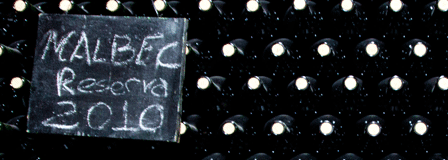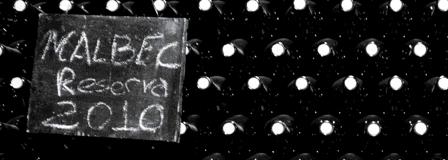Is it possible to OD on Malbec?
If the answer was yes, I would’ve found out the hard way. Mendoza MUST mean “Drink Too Much Wine” in Spanish. In all of Argentina’s restaurants, they offer bottles of wine for at least 1/2 the price of water, and the grocery store sells them for what essentially rounds to free. And these are not cheap, crappy wines – these are delicious pairings to restaurant steak or homemade soup & salad in your hostel or no-food late night drinking while watching Mad Men Season 5 on your computer as you recuperate from your “hard day” of drinking yet more wine.
Mendoza as a town is small and cute and fun to walk around on a quiet Sunday, like we did. There are plenty of good restaurants to choose from, though prices are a bit touristy. Though of course best known for its wine, there’s also a large university in town and quite a bit of history in the region, so you can choose to educate yourself in things other than grape varietals.
We did 2 wine tours in Mendoza – 1 via car in the Lujan de Cuyo region (farther away from Mendoza) and 1 via bike in the Maipu region. The region is of course best known for its Malbec, but also produces quite a bit Cabernet Sauvignon, Tempranillo, and Chardonnay. Our tastings certainly focused on Malbecs and Cabs, though we did really enjoy a couple of the Torrontes (a white we had never tried before – it’s heavily aromatic and fruity but not necessarily sweet. For more info, check out this NYT article).
In Lujan de Cuyo, we visited 3 wineries: Belasco de Baquedano, Norton, and Bonifanti. BdB is a medium-size operation with beautiful grounds against the backdrop of the snow-capped Andes and the added feature of a Hall of Aromas (supposedly only 1 of 4 in the world). According to their website: “As the only one of its kind and scale in the Americas, the Hall presents 46 such fragrances contained in clear Plexiglas posts that line up along the walls of a long, rectangular room. Twist a lever on the side of a post, a baffle spins, and an intense fragrance is released from a small capsule of oil. More than just a novelty, Belasco’s Aroma Hall reveals many levels of a well-crafted wine’s nose, which adds greatly to its art and appreciation.” I don’t know entirely how educational it was for my wine-palate, but at least immediately after, I could think of more descriptive words for my tastes than just “fruity” or “oaky” and instead said things like “strawberry” or “plum” or “lemon” or “grass” or “musk”. Hint: if you want to impress someone while describing a Malbec, always say it has plum undertones. You’re welcome.
Norton is a super large, famous, and beautiful winery owned by the Swarovski (of the crystal variety) family. You notice the wealth of the operation immediately upon entering the grounds – they have nets set up over the vines to protect them from what are apparently torrential hail storms in the summer. They export their wines all over the world including the US, and we recognized their bottles. Their Torrontes was particularly delicious if you can find some. The tour was led by a French girl from Bordeaux living in Mendoza for a bit as part of her wine-related internship. Somewhat ironically, her favorite wines were the ones that spent the most time in French oak barrels. Contrast that to our Argentine tour guide who loved the young wines that hadn’t fully finished their aging process. Don’t read into it too much – just an observation – but more common than you’d think!
Opting out of the crazy-expensive Norton lunch, our group of 6 hostel-stayers and our tour guide ventured to the most local joint imaginable for lunch (conveniently across the street from Norton). The owner/chef/waiter was an authentic gaucho with a serious talent for making meat. I ordered the beef stew which was EASILY the best I’ve ever had in my entire life- the beef cooked in red wine and beef broth just melted in my mouth along with the juicy carrots and soft potatoes. Tyler ordered a Choripan – mouth watering homemade beef&pork chorizo on a freshly baked baguette covered in chimichurri sauce. We of course also drank the house red wine (out of a communal cup) and were treated to an appetizer of serrano ham and bread and dessert consisting of gelatinous fruits and cheese. It was delicious and absurdly cheap- US$8.50/person.
After stuffing ourselves, we ventured to the last, smallest, and our favorite winery of the day, Bonifanti. This was the best wine tour we have ever been on (including Napa, Sonoma, and New Zealand), partially because we had been drinking all day and partially because our guide was SO passionate about his family’s business. He really wanted to teach us how to properly purchase bottles by teaching us about the components of the label. I won’t try to impart all of his teachings here (since I don’t remember everything), but what I do know (only about Argentine wines since it varies from region to region) is this:
1. The year tells you when the grapes were harvested.
2. If it doesn’t say Reserved/Grand Reserved/Aged – it’s never been in a wooden barrel and has only been aged in the steel drum and bottle.
3. Alcohol content – above 14% (most Argentine malbecs) are bolder and more tannic.
We really enjoyed the Bonifanti Malbec from 2010 and purchased a bottle to enjoy later (i.e. 1 week). It’s sold in the US as well though it’s a tiny operation so I’m not sure how easy it will be to find.
In Maipu, we partook in one of our all-time favorite activities: wine biking. Granted we’d only done it once before in Marlborough, NZ, but it’s the type of thing that stays with you. Maipu is an easy ~1 hour bus ride out of Mendoza, and we left early in the morning with our new hostel friend Raffael from Austria to get to Mr. Hugo’s bike rental in Maipu. They gave us 3 bikes, helmets, bottles of water, and maps with inaccurately drawn distances and we were off. Unfortunately, biking around Maipu was nothing like the serenity of Marlborough – we were chased by stray dogs, almost run off the road by buses and large trucks, and had to deal with the drivers in Mendoza who are KNOWN for being horrible and crazy (seriously – it’s in the guidebooks). No matter, we could handle it!
Since we had plenty of wine the day before and after venturing to the waste-of-time wine museum and tasting the worst glass of wine ever, we decided to start at 2 different olive oil/liqueur/fruit preserves/chocolate places instead – I wanted to try the olive oil and the guys wanted to have absinthe before 11am. The olive oil tour was fairly interesting, though brief, but we certainly feel more well educated about what to purchase in the future. Of course in Argentina, the best quality olive oil is dirt cheap, so we have now been spoiled. Perhaps the greatest lesson we learned which we probably should’ve already known but somehow didn’t is that green olives and black olives come for the same tree – they’re just harvested at different times. The more you know.
After taking shots of absinthe, tia maria, irish cream, etc., and eating tons of bread with various jellies (red wine jelly is DELICIOUS), dips, and oils – we were off to our first vineyard, Trapiche. We had been drinking lots of Trapiche malbecs at various restaurants and it was definitely our favorite, so I couldn’t miss the winery. Unfortunately for us though, the next tour was in an hour. We decided to bike over to the craft beer bar and met an American couple from San Francisco there. Drinking beer and eating pizza and empanadas meant missing the Trapiche tour, which was sad, but we had a great time drinking craft beer (our first and only in Argentina) and making new friends. We finally decided it was time to try some wine and ventured to 3 vineyards: Tempus Alba, Familia Di Tommaso, and Mevi. Tempus Alba had the most beautiful facilities and most expensive tasting, but it was really the only “Napa quality” tasting experience in our Mendoza experience. Familia Di Tommaso had the coolest tour because we actually got to go into the early 1900’s concrete/brick fermentation tanks. Mevi had delicious food and a great view. All 3 honestly had great quality wines, but our absolute favorite was the Reserva Malbec from Familia di Tommaso.
By the end of the day, we probably biked 18-20kms. Of course we had to return the bikes by 6:30pm and left not nearly enough time for me to take a leisurely ride back to Mr. Hugo’s – instead it was an all out pedal-fest in our somewhat inebriated state. At some point, a tourist policeman on his motorcycle followed me, either providing an added safety measure so the whizzing cars wouldn’t hit me, or waiting for me to swerve/fall and prove my mental state so he could give me a ticket. I didn’t give him the satisfaction and successfully made it to Mr. Hugo’s with time to spare. He gave us some tang and chips (think Bugles), and we caught the bus back to Mendoza.


